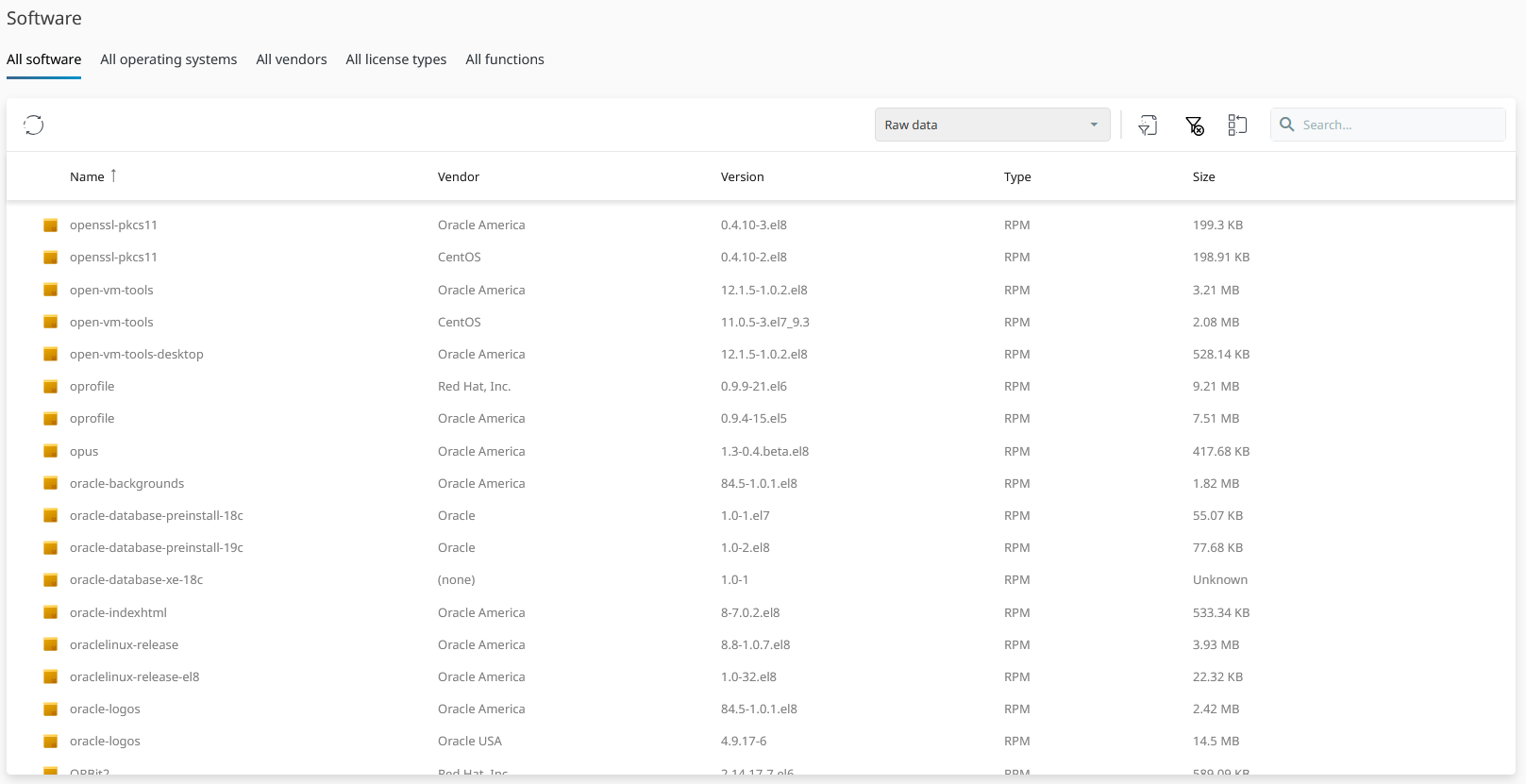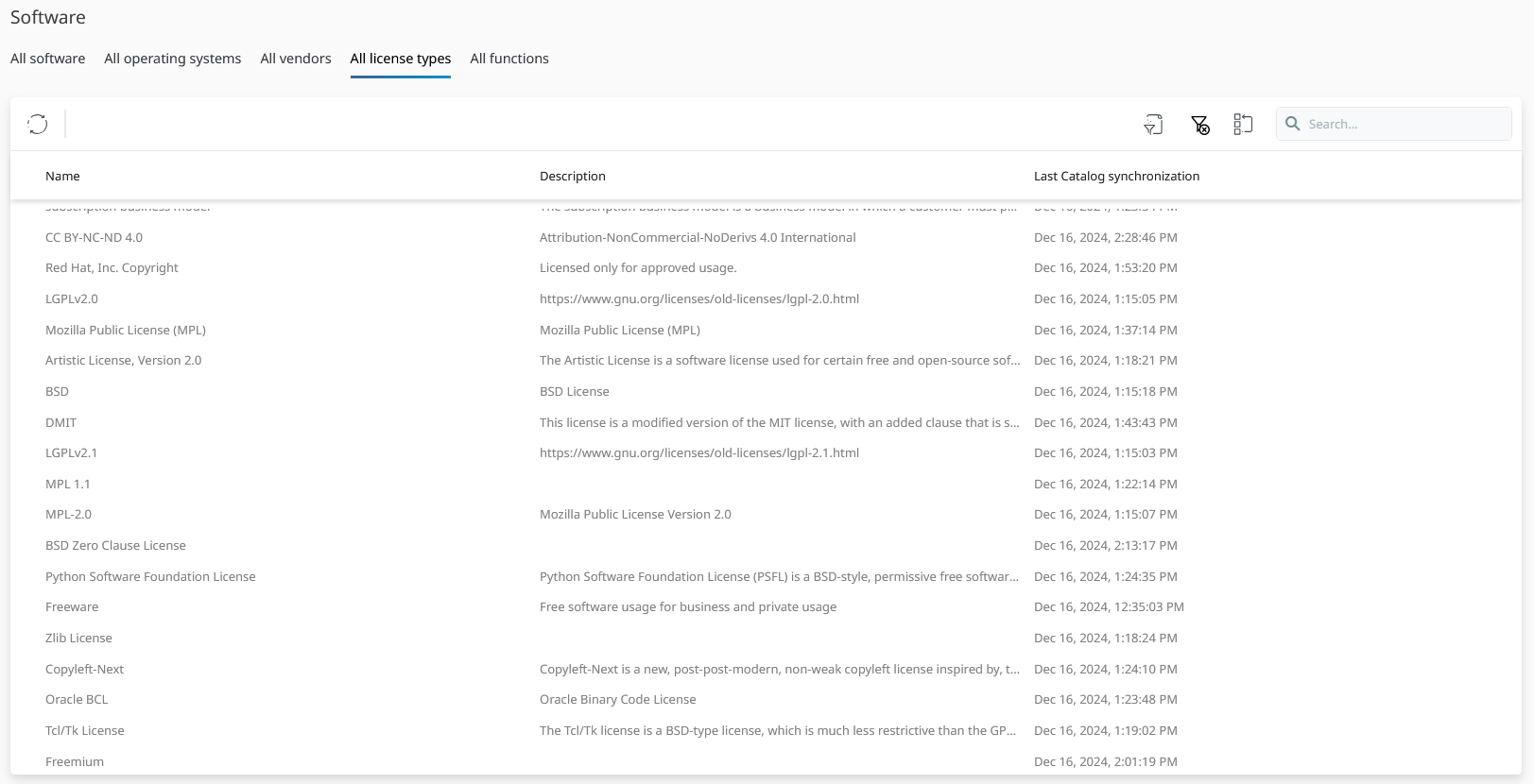The Software view displays a list of all installed software packages in your environment. It includes five tabs: All Software, All operating systems, All vendors, All license types, and All functions. Depending on what information you are looking for, you can select the tab that fits your purpose best.
At this point, the purpose of the All Software view is to serve as example on how to discover and inspect your environment's software portfolio. Basically, you can explore the software portfolio installed and used in your environment in two different list views under the All Software tab. This means you can either select a list consisting of enriched or raw data.
Enriched data
Enriched data list entries show individual package icons and display sub folders within the package, e.g. showing different available versions in your environment. Clicking on a list entry, you're directly forwarded to the Details view containing further specifications. This includes an overview of devices on which this software is installed.

The Enriched data overview with icons and sub folders.

The details view of an entry in the Enriched data view.
Raw data
Raw data list entries show an identical file icon and do not contain any sub folders. Like for enriched data entries, it is possible to access all relevant software information in the Details view.

The raw data overview under the All software tab.

Details view of an entry in the Raw data view.
All operation systems
Under the All operating systems tab, you can discover the overall distribution of operating systems and their key properties inside of your IT landscape. You can find outdated or vulnerable operating systems easily. Analyze the current ones and plan your future device software investments.
The Enriched data view groups the related operating systems. Additionally, it does provide key statistics like the count of known system vulnerabilities.

The enriched list of all operating systems detected during device inventory. The Ubuntu operating system family is expanded. It contains three Ubuntu OS versions, each having their own EoL date and system vulnerabilities count.

The raw list of all operating systems inside of the IT landscape. This list is meant to display the OS data using no additional interpretation or structuring. Unlike in the enriched view, each operating system entry has got an architecture description, empowering strongly technical IT application investment strategies.
All vendors
The All vendors view presents a full summary of software vendors in your managed IT environment. This knowledge can help you save costs, e.g. by considering alternatives for paid, expensive licenses. Compare vendor reputation to help direct your IT landscape to capable software products.

All license types
License information displayed under All license types gives you a clear overview of all licenses used in your managed IT environment. As a professional business, it is important to have a clear and concise overview of all license types in effect on your IT landscape. Detecting overly expensive software licenses helps you control your investment in a sustainable IT infrastructure. Our Catalog database contains detailed information on each license type detected by our network scanning technology. Take a deep dive into the world of IT licensing using this great overview.

All functions
The All functions list view contains all available software functions in your managed IT environment. This list helps you understand the functional processes in your IT landscape. Identify software with overlapping functions. Replace software which uses weaker functions with stronger ones. Learn more about the most important software functions to aid the planning of employee training.

The list of all software functions of the IT landscape. The function named Database is listed. By clicking on it you can find the list of all Database software products used by your devices. Think about and discuss your scope of Database product use. Do you really need five different Database solutions? The amount of database products could be reduced down to one if all technical aspects fit your technical strategy. Lead corporate product strategies with even greater detail by taking the list of all software functions into account.